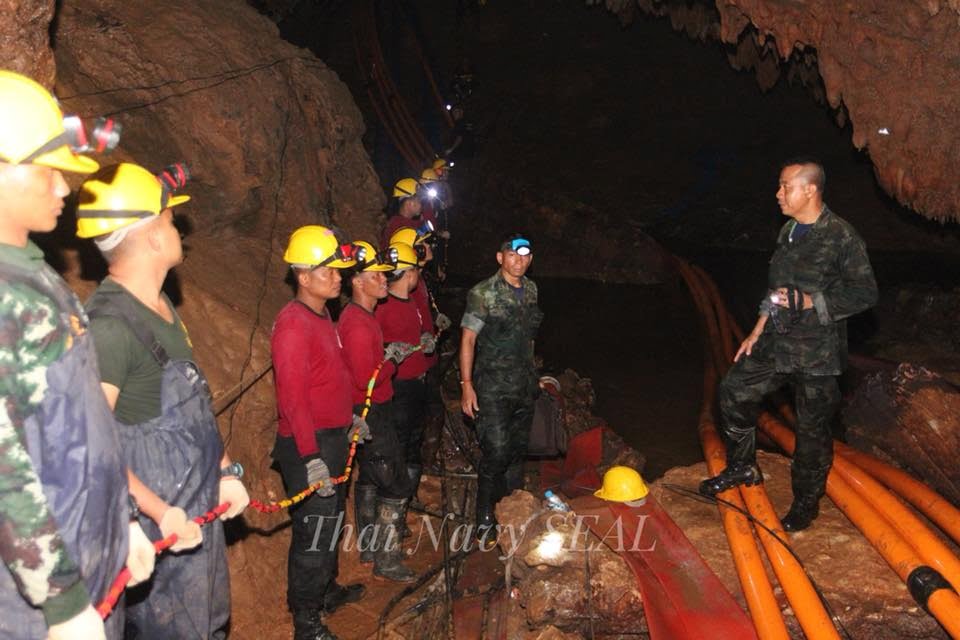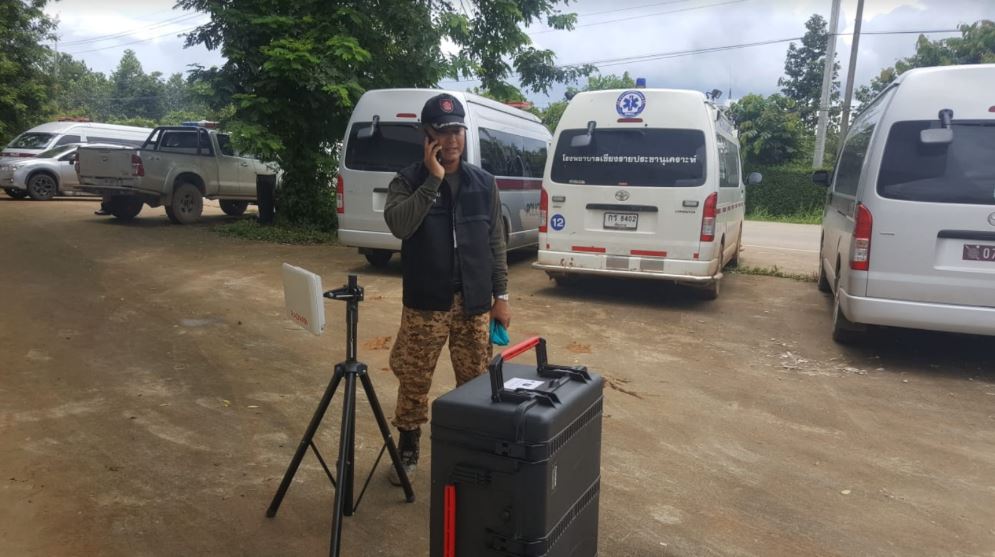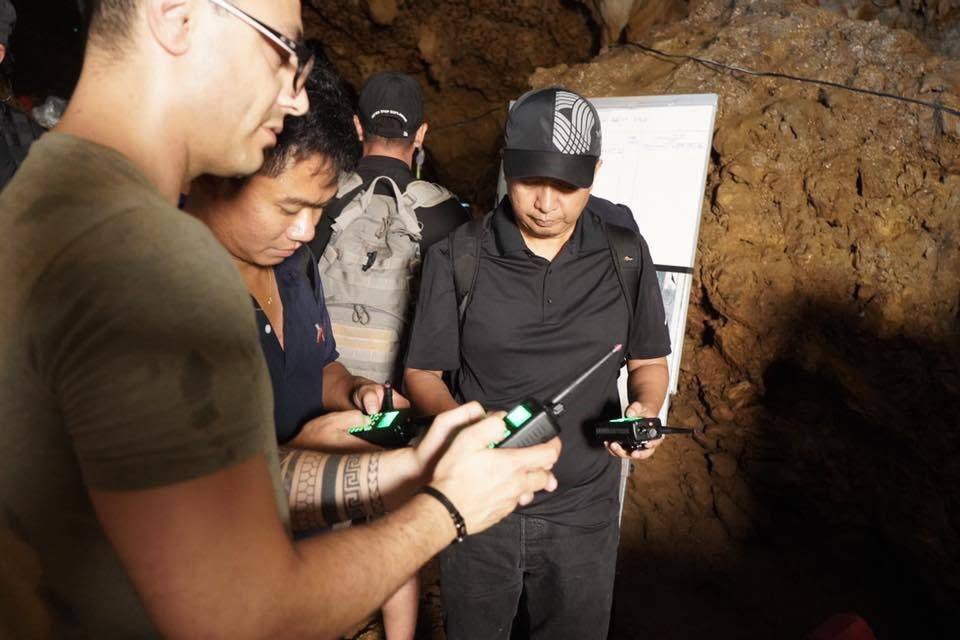The case of the 12 boys and their soccer coach who disappeared more than two weeks ago before being found trapped in a flooded cave in Thailand has dominated news cycles around the world. After the team was located last week following an extended search, rescue efforts by local and international divers began to extract them from the cave system in Chiang Rai.
These efforts were complicated by tough weather conditions and a treacherous environment in the caverns, leading one of the divers on the rescue mission, a former Thai Navy SEAL, to lose his life after he ran out of oxygen while making his way back from the cave to deliver oxygen tanks.
SEE ALSO: This Israeli Tech Helped In Search For Missing Boys Soccer Team In Thailand
By Monday, eight of the boys were rescued from the cave, leaving behind four more and the 25-year-old soccer coach. Rescue operations were suspended for the day as preparations were being made to free the remaining team.
The rescued boys were currently being monitored by doctors in a newly converted isolation ward at Chiang Rai Prachanukroh hospital, due to the threat of illness and infection that could have been picked up at the cave as well as the lack of food and natural light that had been part of their ordeal.
As part of the international efforts to search for the boys, ages 11-16, who first went missing on June 23 the Tham Luang Nang Non caves, NoCamels reported that an Israeli company played a significant role. Maxtech Networks, led by CEO Uzi Hanuni, offered its patented Max-Mesh mobile professional radio device to rescue efforts in Thailand, enabling mission-critical communication of professional mobile radios when no physical infrastructure is available.
Joining rescuers from China, Australia, the UK, Laos, Myanmar and the US, was a second Israeli tech company. Radwin, an Israeli-based provider of point-to-point broadband wireless solutions, donated its wireless equipment to assist in the rescue mission shortly after it was announced.
A team from Radwin’s office in Bangkok, led by local employee Thanadon Mankong, was deployed to the area of the caves, offering Radwin’s equipment to establish a wireless network infrastructure. The company says this enabled the coordination of rescue operations by the various forces in the area.
While Radwin’s tech provided a form of emergency communication, it was not used inside the cave system to help find the boys. According to Ofer Nager, Radwin’s general manager in North Asia, the company established a wireless network to help the extensive number of forces on the ground communicate in an area with little to no connectivity.
With so much flooding to the area due to heavy rains and so many new people suddenly concentrated in the area, electrical fibers underneath the earth and cellular networks in towers above ground, which establish everyday communication were easily damaged, Nagar tells NoCamels. “We provided the wireless backup connectivity for local police forces to enable them to be connected from the site to the closest communication point,” Nagar says.
As soon as he was on site, Mankong helped establish Radwin’s wireless infrastructure to the local police forces that support the rescue operators, including Thai Navy SEAL Special Forces and international divers from around the world, as they used the company’s communication tech to coordinate their activities.
Sign up for our free weekly newsletter
SubscribeThe police need to communicate with the main command control center, Nager explains, and this gives them a reliable way to do so. “We are quite happy and honored to provide even more support,” he says, “To see pictures of the kids [when they were discovered] is everything. We all have kids so we can only imagine what their families are going through.”
Thailand’s military had initially said it could to take months to bring all the boys out of the caves as the region’s rainy season was pounding down on the area and water levels continued to rise. Authorities had prepared long-term food supplies and other materials to help them survive.
Radwin around the world
Radwin’s technology can be found in sectors like transportation, smart cities, mining, power utilities, and oil and gas through carriers around the world. This month, the company announced that it was partnering with tech giant Microsoft to develop TV white space solutions that would help deliver affordable broadband service to rural communities around the world as part of Microsoft’s Rural Airband Initiative, a program aiming to bring broadband connectivity to two million people in rural America by 2022. TV white spaces are unused parts of the television spectrum that can be modified to send data at high speeds over distances of up to 6.2 miles (10 kms).
Last month, the company secured a contract from Argentine Railway (Ferrocarriles Argentinos) for the installation of its FiberinMotion train-to-ground solution.
Radwin also has a history of donating equipment to disaster-struck areas. Following the devastating earthquake in the Indian Ocean in 2004 that triggered several tsunamis, killing more than 230,000 people across 14 countries, Radwin donated equipment for use in the reconstruction of Thailand’s communication network. The company was later commended by Her Royal Highness Princess Maha Chakri Sirindhorn of Thailand in a June 2005 ceremony.
Radwin’s solution was also used to establish on-site communication to assist the rescue of 33 Codelco miners trapped in a San Jose copper in Chile in August 2010. In 2013, Radwin joined forces with sister company RAD Data Communications to contribute 20 Radwin 2000 point-to-point links to service in the Philippines’ following Super Typhoon Haiayan. The Radwin 2000 systems helped re-establish communication networks in a number of typhoon-ravaged areas, the company said.
“At Radwin we place great value on contributing our wireless equipment and providing onsite support to help establish critical communications and assist in rescue efforts,” Nager said in a statement. “We’ve done this in disaster-struck areas such as Haiti and Philippines in the aftermath of hurricanes and monsoons and now in Thailand. We pray for the safe return of these boys and their coach to their homes.”
What happens now?
With monsoon season imminent in Thailand, local and international divers are in a race against the clock to get the rest of the boys and their coach out safely. Nevertheless, many of the rescue forces with boots on the ground have begun to evacuate the area. Nagar reports that Mankong is no longer in the immediate area, though the police are still using Radwin’s wireless broadband connectivity, which is still installed.
SEE ALSO: 5 Innovative Israeli Search-And-Rescue Technologies That Have Our Backs
Hanuni, CEO and co-founder of Maxtech Networks, also tells NoCamels that Yuval Zalmanov, a Maxtech senior software engineer who voluntarily flew out to Thailand two days after the boys were reported missing, is on his way back to Israel. Zalmanov, along with Asaf Zmirly, an Israeli national who lives in Thailand and owns a rescue company, were among the first Israeli rescuers to join the mission after the boys disappeared.
Related posts

Editors’ & Readers’ Choice: 10 Favorite NoCamels Articles

Forward Facing: What Does The Future Hold For Israeli High-Tech?

Impact Innovation: Israeli Startups That Could Shape Our Future






Facebook comments